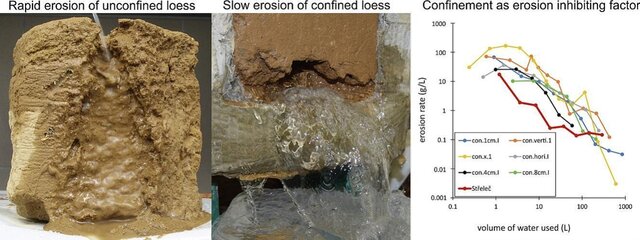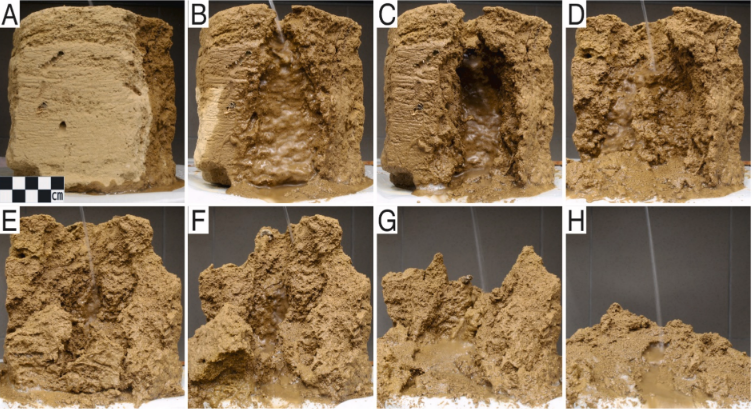Understanding how loess behaves under natural conditions is key to assessing the formation of underground cavities and tunnels in loess terrains. In this study, we developed a custom laboratory setup that used concrete frames to confine decimeter-scale blocks of intact loess, effectively simulating subsurface burial. By comparing confined and unconfined samples under controlled water flow, we measured erosion rates and the stability of loess with and without structural defects such as pre-drilled holes or cracks. A soil-profile-scale erosion experiment in a quarry validated our lab findings under natural conditions.
Results show that confinement dramatically suppresses loess erodibility—by orders of magnitude—compared to unconfined conditions. Moreover, we identified a critical size threshold for cavity formation: defects smaller than ~8 cm generally remain stable, while those above ~10–15 cm rapidly enlarge and trigger collapse. These findings help to understand the sudden appearance of loess tunnels and sinkholes linked to animal burrows or surface fissures.
Ongoing work focuses on smaller-scale confinement setups to better capture the variability of erosion processes at finer resolution. We are also investigating the relationship between erosion rates, soil moisture, and water pressure, particularly how hydraulic gradients influence the initiation and progression of erosion in loess. These experiments aim to improve our understanding of the conditions under which loess begins to fail and how those processes evolve under different settings.
The article Confinement as a key but overlooked factor controlling erosion rate in loess pipes and tunnels was published in Geomorphology 486, 109874 by Jan Vojtíšek, Jiří Bruthans and Tomáš Weiss (https://doi.org/10.1016/j.geomorph.2025.109874).

